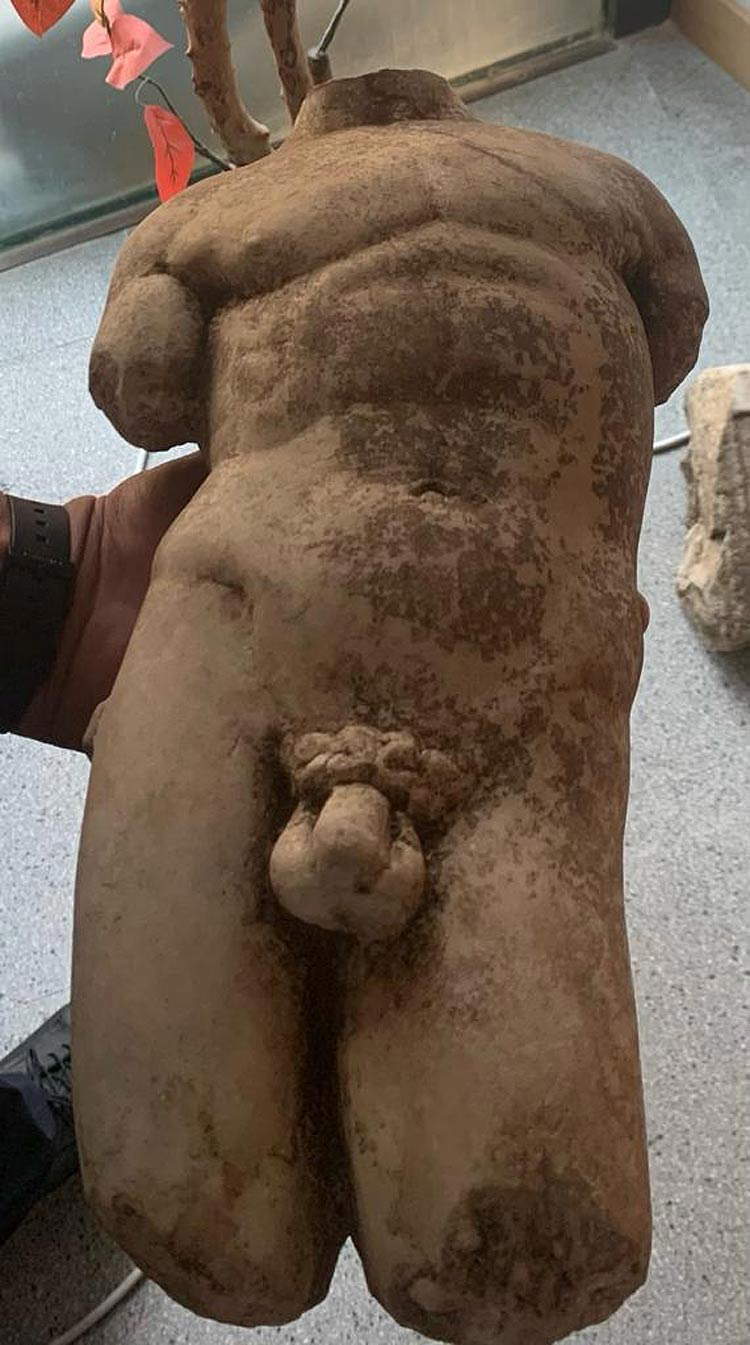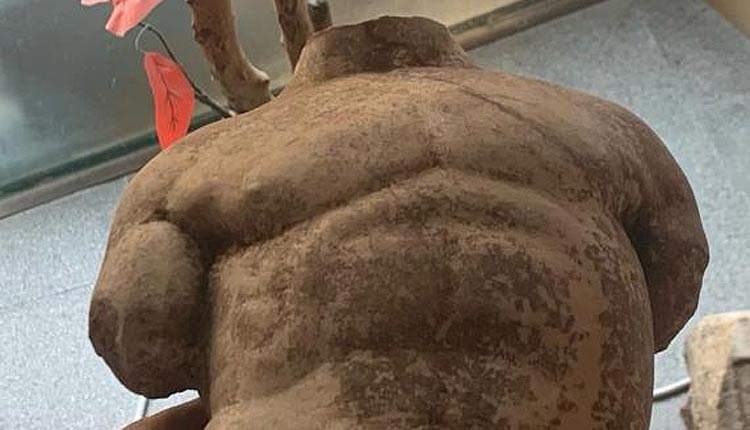Important discovery at the archaeological site of Santa Maria di Falleri, the ancient Falerii Novi located near Fabrica di Roma (Viterbo): this is the city that the Romans built after the defeat of the Falisci and the destruction of their city, Falerii. A few weeks after the start of excavations conducted by the British School at Rome in collaboration with theUniversity of Florence and the universities of Harvard, Ghent, Toronto and Cambridge, and in agreement with the Soprintendenza Archeologica per la provincia di Viterbo e dell’Etruria Meridionale, the site has surprisingly returned a new evidence of the ancient Roman city. Right next to the city walls, which are Falerii ’s most striking and spectacular sign in the landscape of the Fabrica di Roma countryside, and for this reason subject to a protection order, a mutilated marble statue depicting a male figure in heroic nudity, of half-life-size proportions (about two-thirds of the original 90 cm remains, equal to three Roman feet), was recovered.
The torso and upper legs above the knee remain of the figure, while the head and arms are entirely missing. Even so reduced, however, it is possible to recognize a Roman copy of a Greek Praxitelian-style original, perhaps a Hermes, with a sinuous pose and powerful, yet soft and relaxed musculature. At a first estimate, it dates to the first century AD or at most to the early second century.
The work, recovered and handed over to the Local Police by the owner of the farm on whose land it was found, has been secured and will soon be the subject of study and enhancement as part of the collaboration between the Superintendence of Viterbo and Southern Etruria and the Municipality of Fabrica di Roma. The new season of research and promotion of the Santa Maria di Falleri site thus opens under the best auspices and will not fail to bring further surprises to the attention of the public.
The Falerii Novi project of the British School at Rome (BSR) aims to analyze the urban development of this Roman city in southern Etruria.The site, central to our understanding of urbanization in central Italy in the Roman and post-Roman periods, has in fact been the subject of few excavations. In 1997, as part of the Tiber Valley Project, BSR and Southampton University undertook a major geophysical survey of the site, which unveiled the city plan. Recent GPR work by Cambridge and Ghent universities has provided further details. Based on these investigations, recent excavations were initiated, aimed at studying the intramural development of the city. A first season of field investigation was conducted in June 2021 with a series of test pits excavated throughout the city along with a paleoenvironmental coring campaign. The main excavations began in the summer of 2022.

 |
| Viterbo, important Roman statue from the 1st-2nd century AD discovered in Falerii Novi. |
Warning: the translation into English of the original Italian article was created using automatic tools. We undertake to review all articles, but we do not guarantee the total absence of inaccuracies in the translation due to the program. You can find the original by clicking on the ITA button. If you find any mistake,please contact us.